
Product labels are one of the first things customers notice. The right label can make your product pop on the shelf, tell your brand’s story, and influence whether someone picks it up or passes it by.
Pressure-sensitive labels are easy to apply, work with a wide range of packaging types, and offer plenty of design flexibility. But some businesses don’t realize just how many options there are when it comes to materials and applications. Understanding these choices is key to creating labels that stick properly, look great, and keep their appeal long after your product leaves the line.
Unpacking the Benefits of Pressure-sensitive Labels
Pressure-sensitive labeling offers numerous advantages, making it a popular choice for packaging and branding.
These include:
- Easy Application: Pressure-sensitive labels are user-friendly and can be applied quickly.
- Versatility: Suitable for a wide range of surfaces and packaging types, including bottles, boxes, and flexible packaging.
- Durability: High-quality pressure-sensitive labels withstand various environmental conditions, maintaining their appearance and adherence over time.
- Customizability: Available in a variety of designs, materials, and finishes to match brand aesthetics and marketing goals.
Elevate Your Packaging Strategy With Pressure-sensitive Labels
Pressure-sensitive labels can significantly enhance packaging and branding efforts. One of the primary advantages is their ability to enhance shelf appeal. High-quality pressure-sensitive labels make products stand out on crowded shelves. The flexibility in design and material choices allows brands to create unique, eye-catching product labels that draw consumer attention, which is crucial in a competitive market.
Pressure-sensitive labeling are an excellent choice for rebranding efforts and short-term promotional campaigns. They’re easy to apply and remove, making it simple to update product labels without significant downtime or cost.

This adaptability means businesses can quickly respond to market trends, seasonal changes, or special promotions, ensuring their products remain relevant and appealing to consumers. Whether it’s a limited edition release or a complete brand overhaul, pressure-sensitive labels provide the versatility needed to keep packaging fresh and engaging.
Read more reasons why you should use pressure-sensitive labels.
Types of Pressure-sensitive Labels
Choosing the right type of pressure-sensitive labels is crucial for meeting specific packaging needs. Permanent labels offer strong adhesion for long-term use, while removable labels allow you to easily remove the label without leaving residue behind. Removable labels are ideal for temporary promotions or reusable containers.
Transparent product labels create a seamless look, making the packaging appear as if it's directly printed, while opaque product labels provide solid backgrounds that enhance visibility and design elements.
Applying Pressure-sensitive Labels
Pressure-sensitive labels are made of three layers: a face material, adhesive, and release liner. The adhesive is activated by pressure, bonding the label securely to the surface during application. Depending on your product and packaging, there are several application methods that deliver efficiency and precision.
Roller or Drum Applicators
Roller and drum applicators press labels onto products using smooth, controlled pressure. Their versatility makes them suitable for flat packaging, cylindrical containers, and even concave or convex surfaces. These applicators are ideal when speed and consistency matter, offering seamless application that can cover the top, bottom, or both sides of a product in one pass.
Label Pressure Pads
Pressure pads use a controlled press to apply labels to flat or slightly irregular surfaces. Because the pad ensures firm contact, labels are applied with precision, minimizing bubbles or wrinkles. This method works especially well for smaller production lines where accuracy and presentation are top priorities.
Wipe-on Labeling
In wipe-on systems, brushes or rollers smooth labels directly onto the product’s surface. This creates a strong bond and a clean, wrinkle-free finish. Wipe-on pressure-sensitive labeling is best suited for smooth, flat surfaces and moderate production speeds, where dependable adhesion is critical.
Air-blow Labeling
For delicate or unusually shaped products, air-blow systems apply labels without direct contact. A vacuum holds the label in place, and a controlled burst of air transfers it to the container. This non-contact method prevents damage while maintaining speed and accuracy, making it a favorite for high-volume operations that need both precision and care.
Learn all there is to know about pressure-sensitive labels.
5 Killer Product Label Design Ideas
If you want to refresh your product or start your new business from scratch, you are probably wondering where to begin. There is no doubt that a product's label is a big selling point in the eyes of consumers. Refreshing product labels to adhere to current design trends is a great way to draw in new customers and stand out on the shelf.
A brand refresh can help you reach new audiences and feel more modern to consumers. If you are launching a product for the first time, you must find ways for your product to stand out amongst your competitors. Creating a label design that is trendy and different from the rest can help your sales reach new shoppers.

Designing a new label requires you to think outside the box, which can be difficult to do without a little bit of inspiration. Here are 5 product label design ideas to help inspire you during your creative process.
1. Clean, Simple, Readable
Minimalist designs are extremely simple. They typically consist of a neutral color scheme and straightforward fonts. The makeup and skincare brands utilize minimalist designs well. Multiple skincare products focus on using clean ingredients and being completely transparent, which is why the minimalistic design works so well for them.
Another great example of minimalistic label design comes from luxury candle companies. Their candle labels are extremely simple, yet beautifully designed. Their labels include all of the required information needed and are clean and easy to read.
2. Bold Colors
Multiple brands in the consumable product industry have created labels that use bright and engaging colors. If you are selling a product in a market that has many different competitors, using fun colors on your product's label can help catch the attention of customers.
3. Metallic Accents
Experimenting with various textures is another fun way to differentiate your brand. Using metallic accents makes your product labels feel more high-quality and luxurious. If you're using neutral colors, adding a gold metallic accent to your label would be a great touch!
4. Maximalism
Incorporating a maximalist design is a great way to showcase creative designs by local artists. These designs are extremely bold and are often showcased across the entire can or another packaging. In addition to bold colors, the maximalist design catches the attention of customers by being unique. These designs are true works of art!
5. Typography
If you are looking to refresh your product labels, experimenting with typography is a great way to start. After being in business for a while, using different typography will be able to give your brand a new and more modern look.
Choosing the Best Material for Your Pressure-sensitive Labels
The material you choose for your labels directly impacts durability, appearance, and performance. While paper may work for some dry goods, other industries require more robust materials.
Common Label Material Options
- Paper: Affordable and versatile, but limited in moisture resistance. Best for dry goods or short-term applications.
- Film (Polypropylene, Polyester, Vinyl): Flexible, tear-resistant, and durable against moisture. A popular choice for beverages, cosmetics, and outdoor products.
- Specialty (Metallic, Clear, Textured): Premium finishes that elevate product appearance, ideal for luxury or high-impact branding.
Key Factors to Consider
Durability is a must, especially for products that are handled frequently. Moisture and chemical resistance are critical for beverages, cosmetics, and cleaning supplies, while UV protection prevents fading in outdoor or high-light environments. Labels that fail under these conditions can damage compliance and consumer trust.

Match to Your Packaging Needs
Every industry has its own requirements. Food and beverage products benefit from waterproof, FDA-compliant labels. Cosmetics and personal care packaging need adhesives and materials that withstand oils and moisture. Industrial and chemical products require resistance to both chemicals and extreme temperatures. Matching material to your environment ensures your labels last as long as your product.
Ensure Flawless Labels With the Right Adhesive
Choosing the right pressure-sensitive adhesive is key to keeping your product labels securely attached and looking great over time. The surface material, environmental conditions, and label application method all play a crucial role in how well the adhesive performs. Make the right choice to ensure your labels stay flawless and durable, no matter the conditions.
3 Types of Pressure-sensitive Adhesives
- Acrylic Adhesives: Known for their durability and resistance to UV light and chemicals, making them ideal for outdoor and industrial applications.
- Rubber-Based Adhesives: Offer strong initial tack and are suitable for applications requiring immediate adhesion but may degrade over time under UV exposure.
- Specialty Adhesives: Designed for specific applications, such as repositionable adhesives for temporary labels or ultra-high tack adhesives for challenging surfaces.
Explore ways you can maximize shelf appeal with the right label adhesive.
Best Practices for Long-lasting Label Appeal
Even the most well-designed label won’t make an impact if it peels, wrinkles, or fades. Following best practices ensures your labels maintain their appeal from production to consumer use. These steps will help protect your brand image and reduce wasted materials, rework, and compliance risks.

Surface Preparation
A clean, dry, and dust-free surface is non-negotiable. Adhesives simply can’t perform on oily or dirty packaging. Taking time to prep ensures the bond holds from the start. This small step can make the difference between a label that lasts through the product’s shelf life and one that fails after just a few hours.
Precision in Application
Automated pressure-sensitive labeling systems deliver consistent placement and professional results. Regular calibration keeps labels straight and smooth, eliminating waste from misaligned applications. Precision also improves brand perception. Consumers notice when labels are off-center or wrinkled, which can undermine trust in product quality.
Environmental Control
Labels perform best when applied and stored within recommended temperature and humidity ranges. Proper storage prevents label rolls from curling or adhesive from breaking down before use. Monitoring conditions both during application and throughout storage ensures your labels maintain their performance and appearance in real-world environments.
Material and Adhesive Compatibility
Not every adhesive works with every container. Matching adhesives to plastics, glass, metals, or textured surfaces ensures long-term performance, especially in challenging environments like moisture, heat, or chemical exposure. Taking the time to test compatibility before full production reduces the risk of peeling labels, consumer complaints, and product returns.
Ongoing Equipment Care
Routine maintenance prevents buildup, misalignment, or worn parts from compromising quality. Regular inspections extend the life of your labelers and keep production consistent. A well-maintained system also reduces downtime and improves efficiency, helping you get the most out of your automation investment.
Consumer and Regulatory Considerations
Labels must hold up in the environments where consumers use them—refrigerated drinks, bathroom cosmetics, or outdoor goods. But compliance is also key: ingredient lists, warnings, and expiration dates need to remain intact and readable for the product’s full lifecycle. Reliable product labels protect your brand reputation and help you stay ahead of audits or recalls, reducing risk while strengthening consumer trust.
Explore ways you can maximize shelf appeal with the right label adhesive.
Streamline Your Labeling Process With the Right Labeling Equipment
Choosing the right pressure-sensitive labeling system enhances efficiency and consistency. Manual labeling systems may work for some small-scale operations; however, automated labelers have numerous benefits.
.jpg?width=1013&height=506&name=Blog_PressureSensitiveLabeler_900x450%20(1).jpg)
Automated systems deliver high-speed, precision labeling that keeps up with demand. Ensure optimal performance by evaluating the compatibility of your label materials with the labeler, considering production speed, and ensuring the required precision. With the right labeling system, you can streamline your process and elevate your product presentation.
Discover more about the different types, materials, and applications.
Boost Product Visibility With Effective Labeling
Pressure-sensitive labels are a game-changer for packaging, offering easy application, versatility, and durability. Understanding the various types, materials, and pressure-sensitive adhesives allows businesses to fine-tune their labeling strategies, boosting product visibility and consumer engagement. By adopting effective pressure-sensitive labeling practices and using the right labeling equipment, you can ensure your product labels stand out on the shelf and retain their appeal over time.
Elevate your labeling strategy today by downloading our “Practical Guide to Choosing Labeling Equipment” to get expert advice for tailored solutions.
.webp?width=200&height=114&name=2x-Packleader-logo-large%20(1).webp)

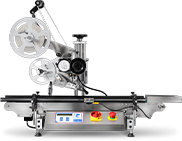
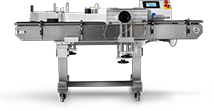

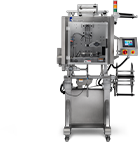
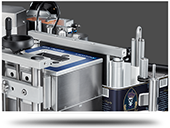

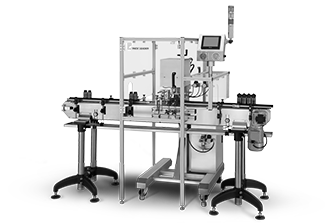






.webp?width=360&name=2x-color-logo%20(1).webp)